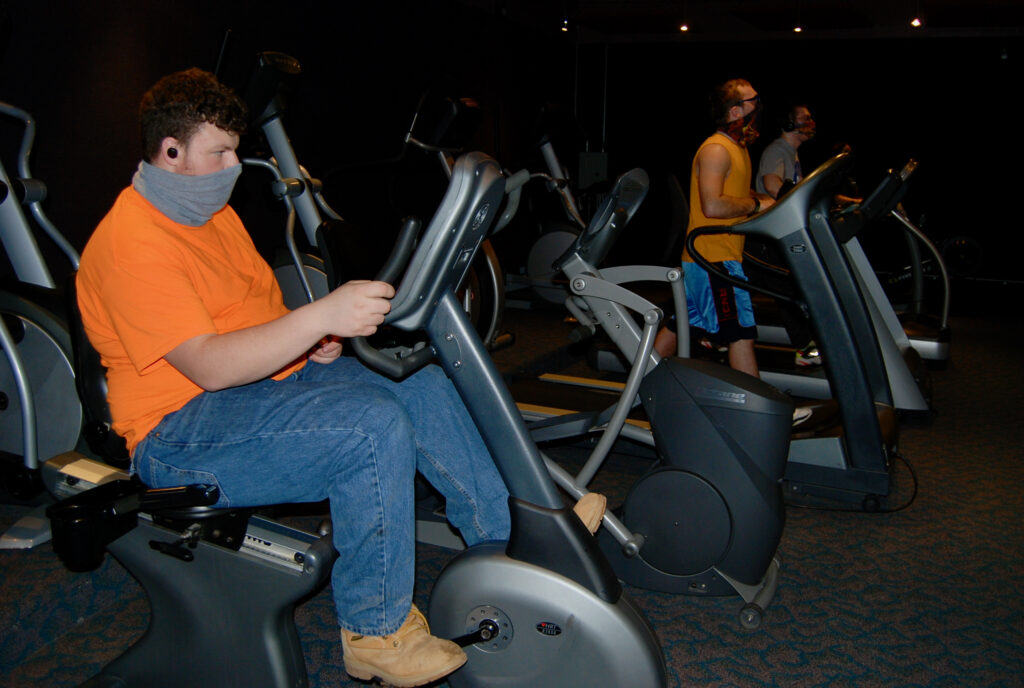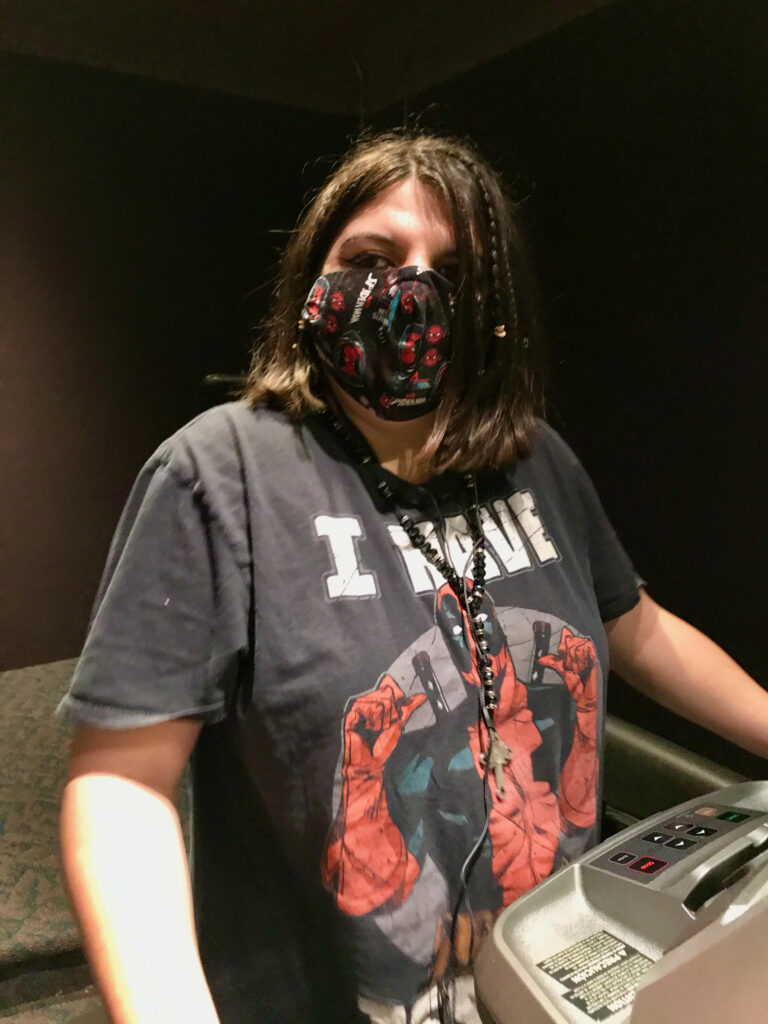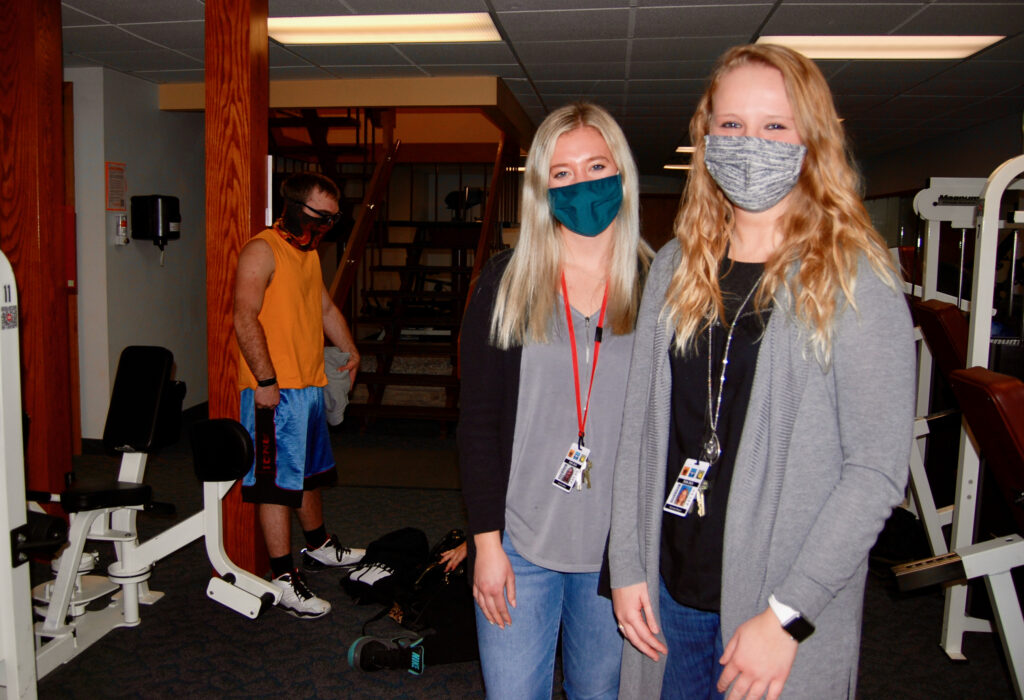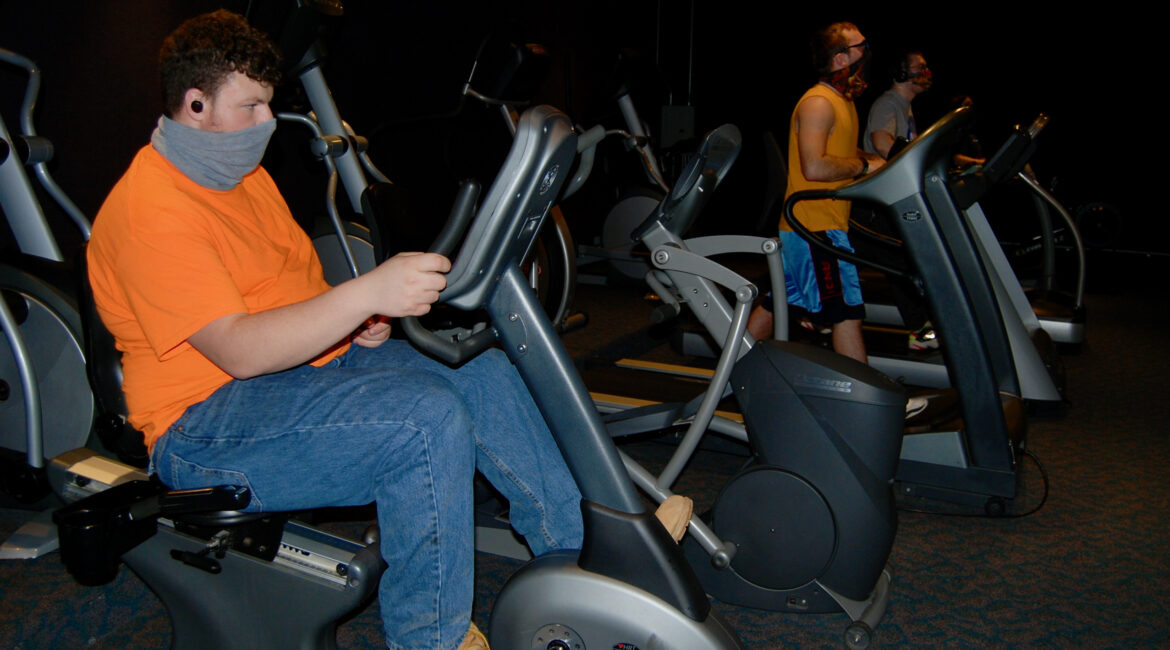By Kim McDarison
Four School District of Fort Atkinson students, a special education teacher and an aide gathered recently at Blackhawk Fitness Center in Fort Atkinson. The students were there to learn how to make healthy life choices and feel comfortable as they embrace new experiences outside of a traditional educational setting.
The community-based instruction, called the 18-21 Pathways Program, is part of a special needs initiative which aims to prepare young adults for independent living after they graduate from high school.
The program provides opportunities for adults, ages 18-21, with special needs to develop skills that will enhance their quality of life after they finish a classroom-based high school curriculum, community-based programming special education teacher Rachael Breyer said.
It’s an opportunity that will help provide a more social, fulfilling and independent life for a population that is at risk for isolation and less opportunity to be independent and social after high school graduation, she added.
This is Breyer’s second year teaching the program. A special needs aide, Isabella Miles, joined the program about one year ago.
This year, Breyer said, the program is serving eight students, who, adhering to COVID-19 precautions, have been meeting virtually and in small groups. COVID-19 has altered programming delivery because many of the venues from within both the business and nonprofit communities that were providing opportunities for students before the pandemic, have been closed or are functioning differently. Still, Breyer said, the program is growing. She anticipates there will be as many as 14 students participating during the next school year.
While some forms of delivery since last March have been different, the objectives have stayed the same, she said.
A main goal is to help students get a job, she added.
Why community-based?
Fort Atkinson High School Transition Coordinator and special education teacher Mark Peterson said he developed the district’s community-based program about five or six years ago for the purpose of working with students within the district with IEPs (individualized education programs) to help them realize their full potential while transitioning from the traditional high school setting and forming independence.
“Special education within the high school is not a new program, but in 2012, some of the laws changed with a focus on having high schools provide more programming that was geared toward transitioning from the high school experience to life after high school,” Peterson said.
“Within the state, there was a big push toward community-based programming to get people out into the community and working. The 18-21 program was established with those goals in mind,” he said.
There are currently two programs within the district for students ages 18 to 21, Peterson said, noting that students are placed in one of the two programs based on needs.
“Both of the programs are community-based. Rachael’s students are able to participate on a high-functioning level. The other program is for students who have demonstrated that they have more needs. They can be part of the 18-21 program, but there is more focus on learning in the classroom. They may be learning similar things as Rachael’s students, but in a more controlled setting,” Peterson said, adding that although programming remains separate, all students in the 18-21 program will have some community-based experiences.
Breyer also teaches students with special needs within the traditional four-year high school setting.
Her schedule provides a morning slot where she teaches ID (intellectual disabilities) English and science.
“I’m the case manager of those students that are going into her classroom. My students are also going into Rachael’s community-based program,” Peterson said.
By working closely with Peterson and teaching in the classroom, Breyer said, she gets an opportunity to meet students who may one day transition into her community-based program.
“At the high school, there are 10 or 11 special education teachers. Between us there is an estimated 20 students that are seniors this year. About six will be going into community-based instruction,” Peterson said, adding that moving into community-based instruction for students ages 18-21 is not a requirement, and not all graduating seniors with IEPs choose to move into the program. Some students and families choose other options because they find the programs don’t fit the needs of their students, he said.
How does it work?
Peterson said the community-based program is designed to get the students out into the community.
“We are working to replicate what things they could be doing as an adult after they leave here (high school). One of my goals for the 18-21 program is to give students a lot of different opportunities,” he said.
Back at the fitness center, Breyer and Miles oversee activities as their students use fitness equipment. For some of her students, Breyer said, visiting the fitness center as part of the program might be the first time they have been inside a fitness center. New experiences in new places at first can seem scary.
“After they go in as a group, it isn’t so scary anymore,” she said.
Getting students acclimated to the environment and on a schedule develops helpful skills they can use in other settings, she said.
For the students, the workout was the first item scheduled in a full day of activities. Each day differs, depending on the schedules and needs of the students.
“It’s just like a normal school day, but instead of being at school, we will be out in the community,” Breyer said, adding that programming is meant to be fun.
Breyer meets with three or four of her eight students each day, so the mix of students also changes, she said. Some students have jobs, so they go to work while others participate in community-based activities, like cooking or shopping, where they learn to plan a meal and budget their money.
“So we could be meeting everyday at a different location. For instance, today, we came here to the fitness center and then we will go to Crossroads House (an instructional building within the district’s Crossroads Alternative Education Program). We cook there.
“A lot of what they (students) learn has to do with small things, like learning to operate appliances, and how to follow a recipe, and they learn time management. They need to establish schedules and a routine, and have an expectation that something is holding them accountable to every day tasks,” Breyer said.
She continued: “Today, after we leave here, we will go to the grocery store and shop for what we need to cook. We will talk about our budget, we will cook, and then we will go to the senior center in town where the students volunteer.”
“Our goal is socialization,” Miles said.
“The goal is to give students the best ability to live independently. And to develop vocational skills or prepare them for post-secondary experiences where they can meet their full potential,” Breyer added.
The program works closely with the Wisconsin Department of Workforce Development’s Division of Vocational Rehabilitation (DVR), an employment program that assists people with disabilities, Breyer said.
For students who qualify, they help find job experiences, pay wages, and provide a job coach.
Students working through DVR are offered opportunities in six-week blocks. Students can try the job out and decide if they like it, or they can try something else, Breyer said.
Among students at the fitness center, two have jobs. Kevin Dietz-Patterson, 20, works at Pick ‘n Save and Nikita McAllister, 20, works at Goodwill. Both stores are located in Fort Atkinson.
“My goal is to stay working there, and little by little, gain more hours when I feel comfortable,” McAllister said.
Dietz-Patterson has worked at an area gas station, but told Breyer he would prefer a different kind of work. He likes his job at Pick ’n Save, she said.
Students also participate in a car wash business facilitated through the high school.
Said Breyer: “The money we raise at our car wash is used to support the Friday Social Hour. So we take that money and go for a social occasion like the Madison Zoo, or a restaurant, or we go bowling or to a movie.”
COVID-19 changed social hour into a virtual activity, but, Breyer said, in-person events in small groups have recently been approved by the district to resume.
Students participating in the car wash earn minimum wage. High school staff members pay $25 to get the full detailing, which, Breyer said, involves a cleaning of the vehicle, inside and out, right down to the students using Q-tips in the vents.
The students operate the car wash on Monday and Tuesday mornings, cleaning one car each day by appointment. The student business operates from a heated maintenance shop at the high school.
“This is a very popular program and we are booked out until April. That’s when we will do our first police car,” Breyer said.
When she is not with her students, Breyer said she spends her time calling area businesses asking about job opportunities for her students. The opportunities she finds for students are typically volunteer.
One of her students, Rueben Guttenberg, 20, recently began volunteering with Anytime Fitness in Fort Atkinson, Breyer said.
Students also volunteer at Touched By A Paw, a cat shelter in Whitewater.
Finding volunteer experiences for her students has been made more challenging by the COVID-19 pandemic. It also changed program delivery, Breyer said.
Virtual programming began last March. This year, the district has resumed in-person instruction, and like other district programs, in-person opportunities came back gradually, she said.
When the pandemic started, Breyer said, “we were virtual. We would do things like virtually cook at home. So we would Google Meet and cook. The students would do it with a parent next to them. We would keep a daily living skills log and the students would each have three or four chores.”
Rewarding work
Both Breyer and Miles described their work as rewarding.
The work is multifaceted, Breyer said, noting that she is involved with setting schedules for her students, and she and Miles provide transportation, often picking their students up, bringing them to their various activities, and dropping them off at the end of the day. Currently all of their students live in Fort Atkinson.
Said Breyer: “The work is very rewarding and it is different everyday. For me, to see the kids grow each day and see progress … I always have a smile on my face working with the group I have. It’s especially rewarding, after graduating from college and getting a job where I can work at my true passion, that is a reward in itself.”
Breyer is a 2019 University of Wisconsin-Whitewater graduate, holding a bachelor’s degree in special education with an emphasis in intellectual disabilities.
Breyer said she is rewarded to see her students out in the community, adding that often after high school, special needs adults do not come out into the community and spend more time at home.
Said Miles: “It’s very rewarding. I love working with these kids and building relationships with them and seeing them grow. I’m still new at it, and I’m happy to see them graduate and how far they’ve come.”
A graduate of Craig High School in Janesville, Miles worked within the school’s paraprofessional program before joining the team at Fort Atkinson.
“I’m also so happy to have our full program. We are not just providing a job coach, but we are setting up the job experience through different vocational experiences and providing other life experiences throughout the week.
“I look forward to experiencing what the kids do,” she said.
Peterson, too, talked about the success of the program, citing several community partners like the Fireside Dinner Theatre, Pick ’n Save, Opportunities, Inc., BASE and others.
He is currently working with Madison Area Technical College in Fort Atkinson to develop additional opportunities for students, he said.
When he was developing the program, Peterson said, he asked himself: “What is it I want students to be able to do after high school? I wanted to provide some different areas of opportunity and offer experiences so they can do what every other adult can do.
“Fitness, cooking, budgeting, arts and crafts, all of those things were in the mix.”
He is often looking for volunteer and volunteer-to-work experiences for his students.
In the past, he said, his students have volunteered at the Hoard Historical Museum, and washed dishes after club-sponsored events at the Fort Atkinson Club. They have also volunteered at the hospital, bringing patients a newspaper and snacks.
“I’m very proud of this program and very happy with where it’s going,” Peterson said.
Looking ahead, he said, a program goal is to work more closely with the business community, sharing the message: “These students can work. They have good skills that they can share with the community.”
Those interested in learning more about the program can contact Peterson by email: petersonm@fortschools.org.

School District of Fort Atkinson 18-21 Pathways Program participant Cameron Wittek, 20, enjoys morning exercise time with his classmates. The students met recently at Blackhawk Fitness Center in Fort Atkinson as part of their community-based curriculum.

Kevin Dietz-Patterson, from left, and Rueben Guttenberg, both 20, use the treadmills at Blackhawk Fitness Center in Fort Atkinson. The students are part of the community-based 18-21 Pathways Program available to special needs students through Fort Atkinson High School.

Nikita McAllister, 20, exercising on a treadmill.

Kevin Dietz-Patterson gathers his belongings as students in the 18-21 Pathways Program prepare to leave the fitness center and continue with other activities scheduled as part of their community-based educational day. Students received daily instruction from program aide Isabella Miles (center) and special education teacher Rachael Breyer.
This post has already been read 2415 times!
